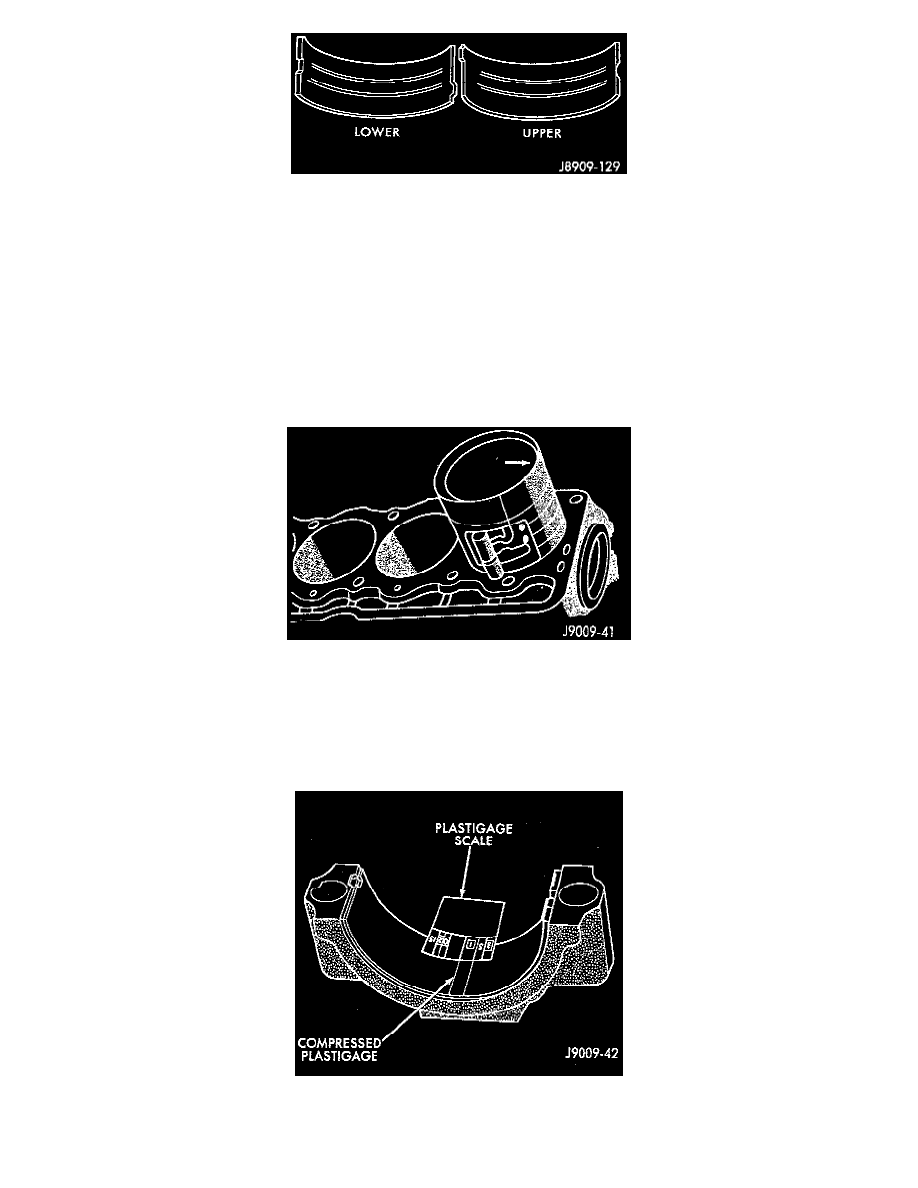Grand Cherokee 2WD L6-4.0L VIN S (1997)

Bearings
Inspect the connecting rod bearings for scoring and bent alignment tabs. Check the bearings for normal wear patterns, scoring, grooving, fatigue
and pitting. Replace any bearing that shows abnormal wear. Inspect the connecting rod journals for signs of scoring, nicks and burrs.
Connecting Rods
Misaligned or bent connecting rods can cause abnormal wear on pistons, piston rings, cylinder walls, connecting rod bee-rings and crankshaft
connecting rod journals. If wear patterns or damage to any of these components indicate the probability of a misaligned connecting rod, inspect it
for correct rod alignment. Replace misaligned, bent or twisted connecting rods.
BEARING-TO-JOURNAL CLEARANCE
1. Wipe the oil from the connecting rod journal.
2. Use short rubber hose sections over rod bolts during installation.
3. Lubricate the upper bearing insert and install in connecting rod.
4. Use piston ring compressor to install the rod and piston assemblies. The oil squirt holes in the rods must face the camshaft. The arrow on the
piston crown should point to the front of the engine. Verify that the oil squirt holes in the rods face the camshaft and that the arrows on the pistons
face the front of the engine.
5. Install the lower bearing insert in the bearing cap. The lower insert must be dry. Place strip of Plastigage across full width of the lower insert at the
center of bearing cap. Plastigage must not crumble in use. If brittle, obtain fresh stock.
6. Install bearing cap and connecting rod on the journal and tighten nuts to 45 Nm (33 ft. lbs.) torque. DO NOT rotate crankshaft. Plastigage will
smear, resulting in inaccurate indication.
7. Remove the bearing cap and determine amount of bearing-to-journal clearance by measuring the width of compressed Plastigage. Refer to
Specifications for the proper clearance. Plastigage should indicate the same clearance across the entire width of the insert. If the clearance varies, it
may be caused by either a tapered journal, bent connecting rod or foreign material trapped between the insert and cap or rod.
